Let's not be deceived. During World War II, souvenirs made of human bones and skin, and even eyes or ears, were collected not only by the Nazis and their allies. The Allies, returning from the front, also brought home terrible trophies. And the knife made of the bones of a Japanese soldier had the president of the United States himself. What else was considered a front souvenir?
It was May 1944. An advisor to aviation companies and a famous American aviator, Charles Lindbergh, was just visiting Bougainville Island in the Solomon Islands archipelago. Engineering troops of the US Army were building a new road there. Its course was marked by two rows of piles. As Lindbergh came closer, he noticed that they were stuffed with… decomposing heads of Japanese soldiers.
The intrigued aviator learned that when the bulldozers had dug up the ground for the new trail, they came across shallow graves of the Japanese buried after the fighting took place here. The Americans cut off their heads and decorated the road with them as war trophies.
A skull as a mascot… or a gift
The custom of beheading Japanese soldiers was common among Americans fighting in the Far East. As anthropologist Frances Larson writes in the book "The History of the World by Beheaded Heads Down" writes, skulls were hung in camps, on information boards and at road crossings. They were kept on bunks and on tables. They even served as "mascots" decorating American tanks and truck cabins. You could find them, Larson points out, pretty much anywhere:
Mack Morriss, an American war journalist, wrote about a skull attached to a pole in the center of an engineering tent in Guadalcanal; a helmet with the inscription was placed on it " Made in Tokyo ” in front .
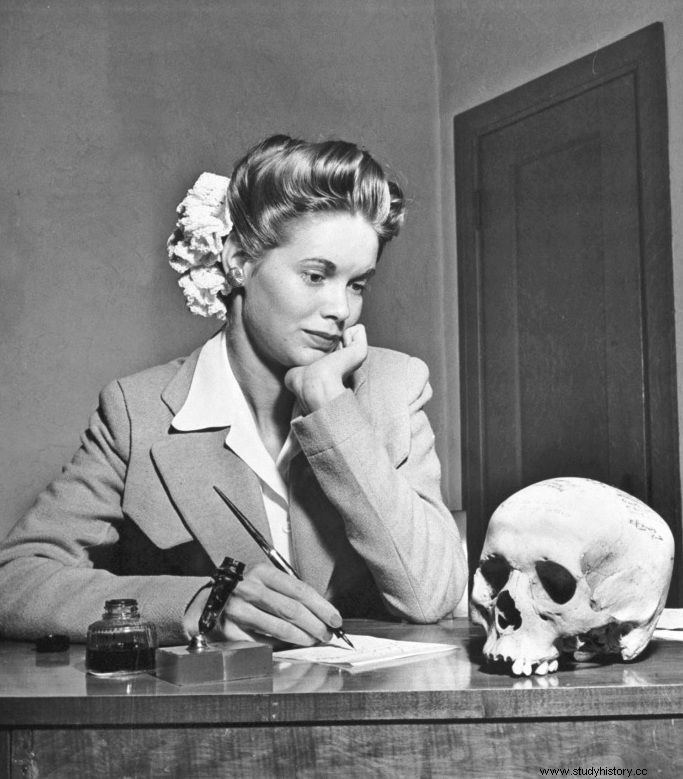
Photo of Natalie Nickerson, a Phoenix factory worker, writing a letter to a naval servant fiance, thanking him for sending her a souvenir from the New Guinea fights - the skull of a Japanese prisoner of war. Photo and caption from the book "The history of the world through the decapitated heads described" (Bellona 2017).
US soldiers were also preparing gifts for their relatives from the bodies of the killed Japanese. The severed heads of the enemies were first properly prepared to obtain clean bone. The skull was then polished, the signatures of colleagues from the ward collected on it and covered with varnish . They sent the prepared souvenir to their families in the States.
This practice was so common that the American press wrote about it emotionlessly as something completely normal. Pictures of human heads stuck on stilts, signposts or American tanks were published equally dispassionately, even in major newspapers.
The skulls captured by Americans in the Pacific Islands have become an object of trade. Sailors bought them from soldiers, who transported "goods" to the States and circulated them there. This phenomenon has reached a huge scale. Towards the end of the war, the first question that officials in Hawaii asked soldiers returning from the front was about having skulls. Or other human bones.
A bone knife for President Roosevelt
Not only skulls were collected. The Japanese had their ears, noses and fingers cut off. Scalps were removed from them and teeth pulled out. Descriptions of the gruesome soldier's trophies can be found in the memoirs of Eugene Sledge, a participant in the Battle of Peleliu Island in 1944. For example, one of his colleagues had a mummified hand in his backpack. Another soldier from his squad once cut gold teeth on a Japanese who was still alive, badly injured.
Soldiers carved souvenirs from human bones and cut their names on them. They also used them, as Charles Lindbergh recalls, for everyday objects. The American aviator is quoted by Larson in his book "The History of the World by Beheaded Heads Described":
Staff at the control center on Noemfoor Island, New Guinea "often brought the thighbones of shot Japanese people to make containers for pencils, paper knives and the like." An Australian soldier converted the skull of a Japanese man into a snuffbox. Skulls, long bones and ribs were the most popular materials among sculptors .
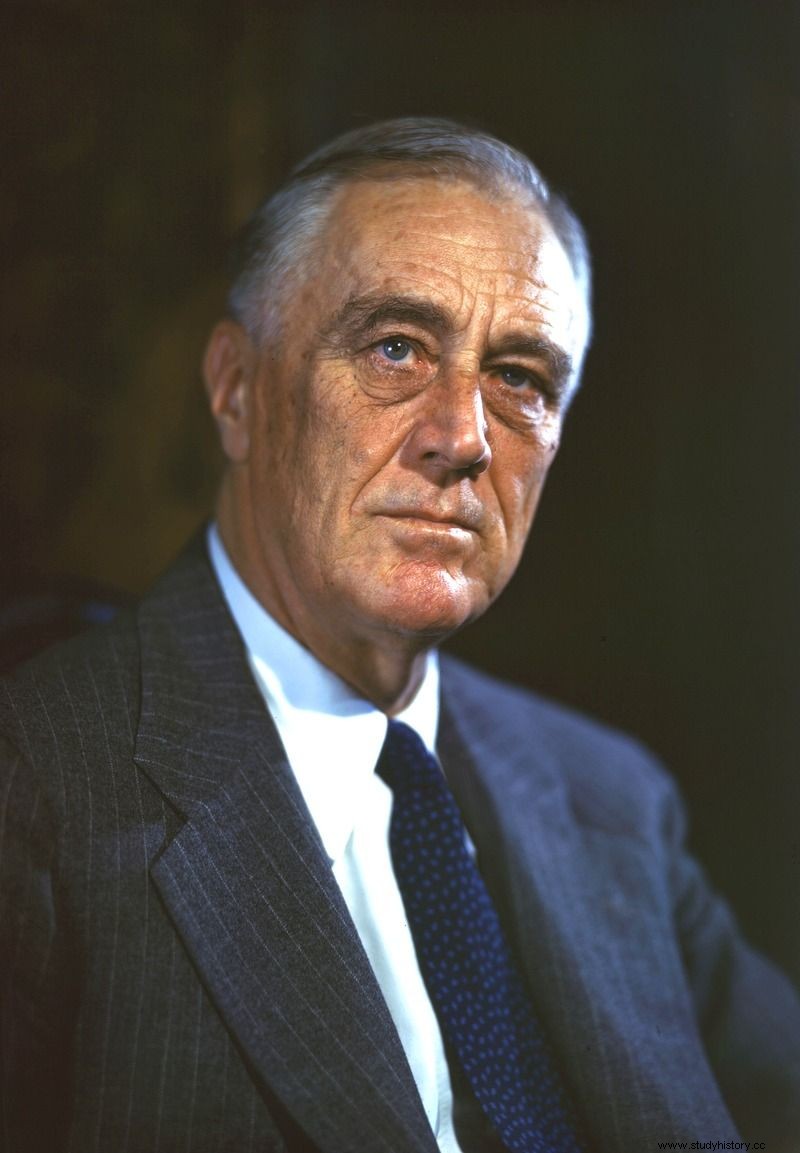
A letter opener made of human bone as a gift to the president of the USA? Why not. Pictured is Franklin D. Roosevelt (source:FDR Presidential Library &Museum; lic. CC BY 2.0).
These awe-inspiring mementos of the Pacific War (as well as later Korean and Vietnamese wars) are still found in the homes of American soldiers today. One was given to ... President Franklin D. Roosevelt himself. In June 1944, Congressman from Pennsylvania, Francis Walter, presented him with a letter opener made from the shoulder bone of a Japanese soldier . The deputy apologized for the modest gift. The president replied: There will be many more of these kinds of gifts soon .
Necklace made of human eyes
The Americans were no exception, however, when the Americans were collecting body fragments. Much like US troops in the Pacific, soldiers on other fronts of World War II behaved. For example, Croatian Ustashe, allied with the Third Reich, showed particular brutality. During the war, in part of what is now Croatia and Bosnia and Herzegovina, they established the Independent State of Croatia, under the Italian-German protectorate. It was headed by Ante Pavelić.
The Ustashe's cruelty was directed especially against the local Serbs. Their policy is summarized in a statement by one of the ministers: One-third of Serbs must be expelled, one-third - by force converted to Catholicism, and a third - murdered . Pursuant to this directive, the extermination of Serbian citizens began. The Ustaše killed them en masse, often using primitive tools - axes, knives, pickaxes.
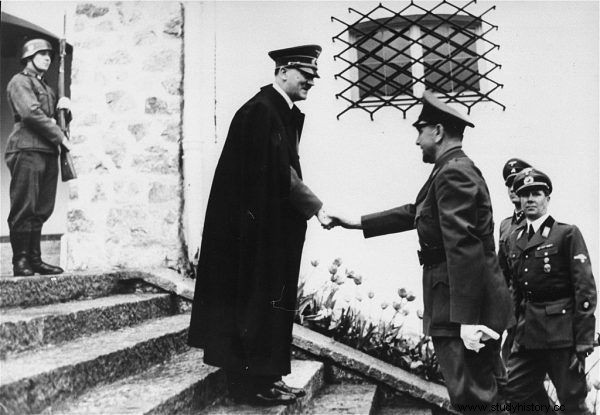
The leader of the Independent State of Croatia, Ante Pavelić, greets Adolf Hitler (source:United States Holocaust Memorial Museum; license public domain).
The custom of collecting parts of the victims' bodies has spread among the murderers. According to the reports of Italian soldiers staying in the protectorate, the Ustashe wore necklaces made of gouged human eyes and cut off tongues.
The severed organs were also used as gifts. An Italian war reporter came across this practice. Pavelić handed him a large bowl filled with something resembling oysters. When asked what the Italian was, the head of government replied that it was a gift from his faithful Ustashe: 40 pounds of Serbian eyes ...
Sophisticated Buchenwald souvenirs
Especially the Nazis climbed to the heights of sophistication in the creation of objects made of the human body. There was no shortage of opportunities for them. For example, Ilse Koch, who from 1941 served as the supervisor of the women's camp in Buchenwald, became a real collector. She was famous for her incredible cruelty or even sadism. She was called the "Witch of Buchenwald."
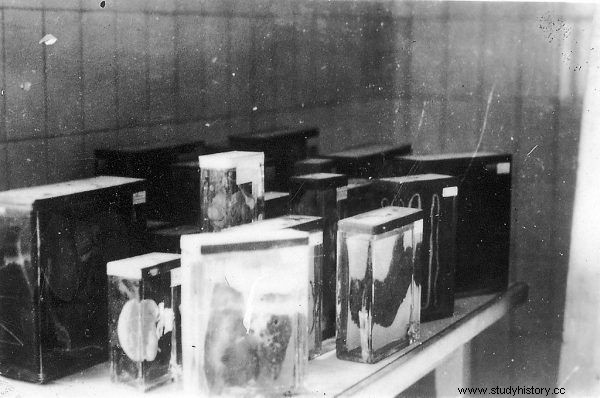
The organs of the Buchenwald camp prisoners from the Ilse Koch "collection". Photo taken after the liberation of the camp (photo:Jules Rouard; license CC BY-SA 3.0).
Koch was looking for prisoners who had interesting tattoos . Then she had them killed and their skin made into gloves, handbags, book bindings or lampshades . She sent these items as gifts to her officers and superiors she knew.
The witch of Buchenwald herself had a whole collection of things, for the creation of which the bodies of prisoners were used. There were lamps made of human bones in her apartment, she used mummified thumbs as light switches, and the dining room was decorated with specially crafted human skulls. She also kept at home a photo album bound in leather removed from one of the prisoners. Apparently, she took great care of him and made sure that he was always in a cover made of black fabric.
The cruel overseer had a habit of wandering around the camp with her other terrifying trophy:a leather purse that had the same tattoo as one of the dead prisoners. She also wore human skin gloves made especially for her. Rumor has it that she was quite picky about it. She considered the most beautiful and valuable products made of the skins of Gypsies and Russian prisoners of war.

The Stalingrad Scalps
Cases of collecting macabre goods also happened among Soviet soldiers. Take Vasily Zaitsev, a Soviet sniper, for example. To this day, he is considered one of the best sharpshooters in history. It was the model of the hero of the famous American film "Enemy at the Gates".
However, unlike his film alter ego, played by the likeable Jude Law, the real Zaitsev was a brutal man. He became a sniper after killing 32 German soldiers in ten days at the age of 27 in 1942. He really showed himself at the Battle of Stalingrad, already having - in his new position - better weapons. He shot 125 enemy soldiers, including seven snipers.
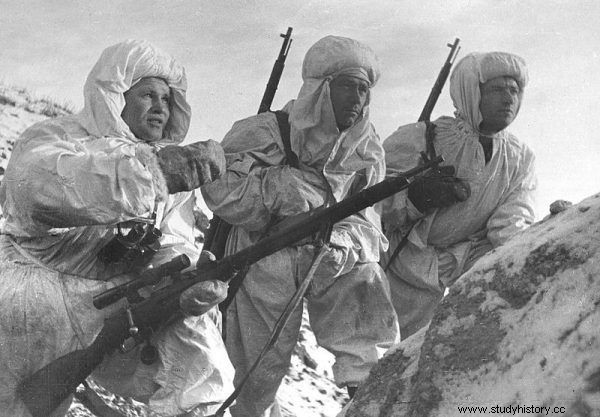
Vasily Zaitsev (first from left) a scalp hunter? (source:public domain).
Thanks to his unfailing eye, Zaitsev decimated the German soldiers. According to some sources, he also had a habit of… taking scalps off the killed enemies. They were a trophy for him. Soviet propaganda happily informed about it. In this way, they wanted to arouse even greater fear in the Germans of the famous sniper-killer.
Soviet partisans also liked human souvenirs. The brutal actions of their units were described in one of the collaborative newspapers published by the Germans in the occupied territories of the USSR. Soviet soldiers cut pieces of skin and vertebrae of the spine from the killed Germans, took off scalps and cut off their heads. Forest bandits torment our people like animals - the magazine reported.
